Video games come in many flavors. Some are masterpieces of storytelling and character development, giving us a combined experience of books, movies, and long running series. Others are competitive platforms where players can test their reflexes and quick thinking against others. There are even those who apparently only exist to fill those few minutes we have to move away from reality and just get a bit of temporary fun.
Then there is Monster Hunter: World.
At its essence, Monster Hunter: World is a looter game. Its purpose, much like Diablo, Borderlands, and Destiny, is to kill stuff and gather whatever they drop in order to make your character stronger and be ready to face bigger threats. The franchise has always being about that. So, what makes Monster Hunter: World such a phenomenon these days?
To understand this we need to determine what exactly is the Monster Hunter franchise. The basic is concept is: you hunt a monster, carve its corpse, craft armor and weapons from the items you gather, and move on the the next hunt. It is a very closed and repetitive loop, repeated ad infinitum with each game. The whole process, however, involved a lot more steps: you had to study the monster you want to hunt, prepare the adequate set of equipment, pick some potions and accessories to aid you, perhaps even select a more appropriate weapon to use against it, then select the monster, travel to its map, track it down, and proceed with the fight.
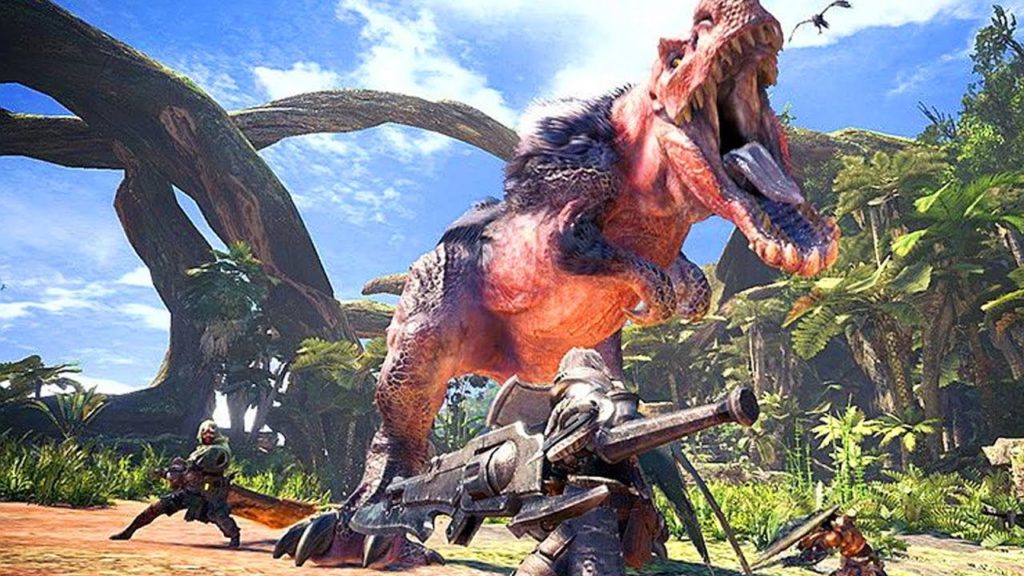
A less punitive experience
There’s a lot to do in terms of preparation. You see, each monster in Monster Hunter is not just a random goblin you slash once to kill it. They are massive boss fights, tough creatures who can endure dozens of your strikes and are capable of killing you with a few moves. If you go unprepared, you are very likely to become roasted meat.
Each monster also has a lot more complexity then your regular video game foe or boss. Each creature has weak spots, parts of their bodies are protected by hard scales, they can fly, they can jump, they can cut you with sharp claws, slam you with powerful horns, or throw you with massive tail slaps. Fighting against them means understanding where to hit with your weapon and when to attack or defend.
Traditionally, the franchise was never friendly to new players in this regard. If you ever forgot a single potion or a simple tool, or if you went with a slightly non-optimal set of equipment, you would be punished with failure. You had to carefully establish a somewhat long set of preparation steps and remember them entirely each time. It could be kinda of a chore for most people, like it was to me, and thus it became hard to be enticed by the game unless you had a very specific mindset when playing it (a mindset very similar to one you use during your job, which is hardly what people are looking for when they play a video game).
Monster Hunter: World came to destroy that. The monsters were still badass tough beasts with weak spots, protective scales, and deadly strikes. The preparation, however, was a lot less demanding. Instead of punishing the unprepared, the game made more to incentive those who want perfect preparations. Many tools became permanent to your inventory, support items became only really essential in late-game fights, and your equipment was not so important anymore. If you had a decent set of armor and weapon, you were likely to be able to beat the next monster after studying it a bit and having some perseverance.
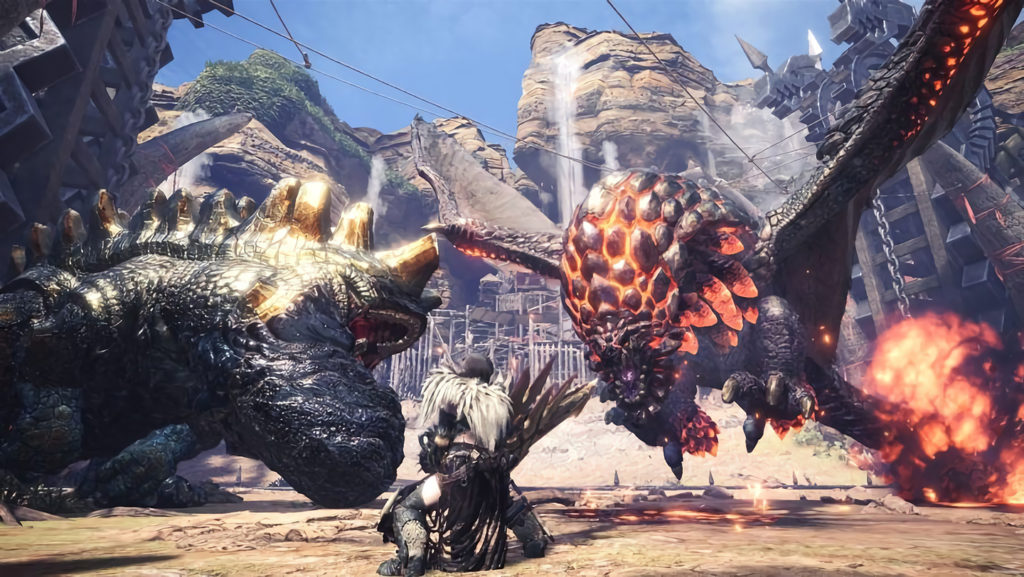
A better introduction to the monsters
Another set of important changes came with the very welcome introduction of a decent story progression. Instead of just receiving random quests about the next monster to hunt, Monster Hunter: World starts with an epic quest where you are on the hunt of the massive Zorah Magdaros, a mountain-sized dragon. It is during this quest you will be introduced to new monsters, as if in a gigantic tutorial mode.
This slow introduction is crucial to Monster Hunter franchise because the monsters are not your only enemies here, combat is too. I mean, combat is NOT easy. The weapons have real weight and every swing may be either your successful strike or a opening to a monster’s deadly attack. Understanding a weapon takes time, and these introductions to monsters serve masterfully to allow you to grasp each weapon’s weakness and strengths. You cannot simply hack and slash your way through combat. Some weapons are slow, some require careful positioning, others may have you too close to the enemy to hit, others depend on defensive shields to protect you, some only allow you to dodge, etc. Each weapon is like a completely different gameplay experience. As you make your way through the main story you get to learn more and more about what you can and cannot do with your chosen weapon.
The game hits the spot in this learning curve. You start your way against a slow and predictable Jagras, which gives you room for many mistakes while swinging your weapon for the first time. You later move on against the much quicker and smaller Kulu Yaku, which makes you learn more about positioning. After that there is the Pukei Pukei, a much more unpredictable foe with long range attacks and poison.
After a few hours you face massive beasts such as the Anjanath, and from there on the game starts to put you against the real challenge, known as the High Rank monsters. It is a rewarding curve of learning, which is something very few games ever got close to achieving.
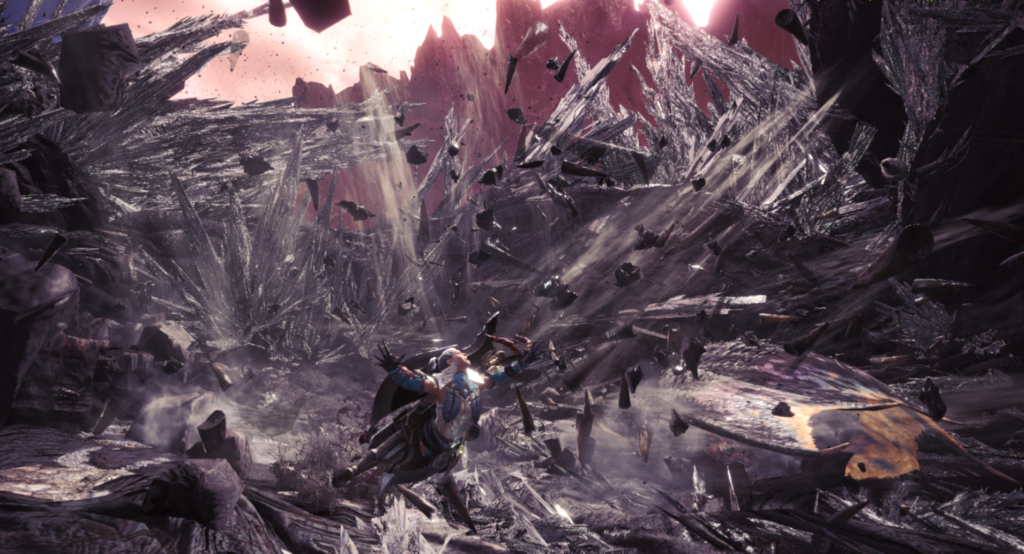
And the loop is perfect
The tale, as I said, is basically just a long tutorial presenting each monster. It is not a masterful piece of storytelling, but it works in what it tries to be: pick you from one fight to the next. The real game, however, is the hunting loop of the post-credits content. You get introduced to stronger versions of the known monsters, you get more customization options open for your weapon and armors, and you start to decide on your own what monster you will be hunting.
The basic idea may seem boring: you go hunt, pick loot, and craft better armor. However, the rewards are always enough to keep you going and there is a lot to experiment with. You could simply try to create a single combination of equipment for your favorite armor, or you could craft multiple armor sets, each for a specific monster or type of monster. You could start experimenting with a new weapon, which basically gives you a complete new experience of the game. Changing from bow to lance is like putting another game on your console (or PC).
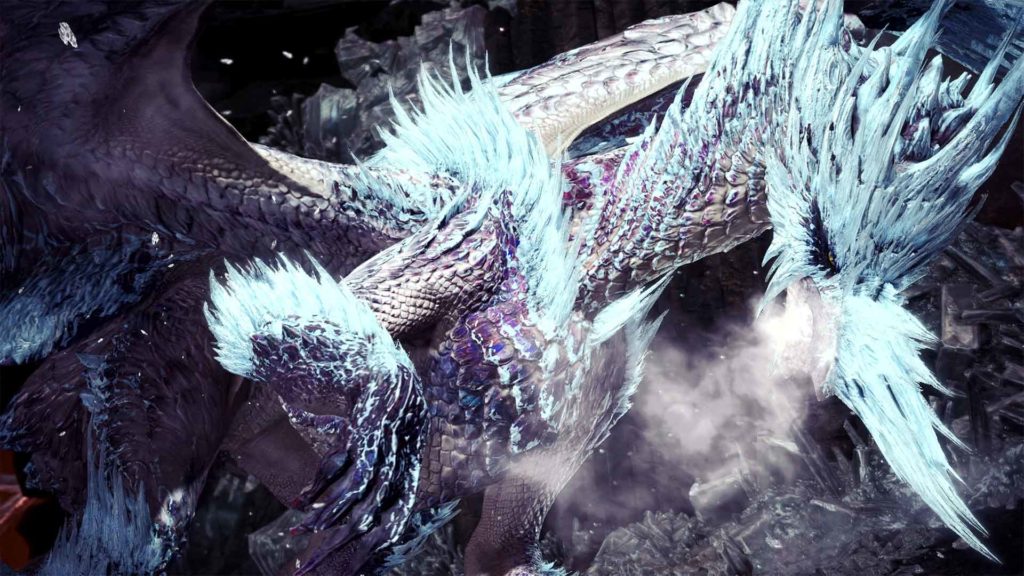
Then there is Iceborne, which is basically Monster Hunter: World on steroids doing everything it did once again and introducing a lot more to do. Although MMORPG’s loop usually get me bored after a few weeks, Monster Hunter: World got me engaged for months before starting to feel like I had nothing more to do. Even then, when I put the game back, I only had to pick a different weapon and suddenly I had all that fun learning curve to go through again and new pieces of equipment to hunt for.
And it’s multiplayer
I cannot imagine playing Monster Hunter: World as much as a I did without its multiplayer components. You see, when playing alone the game can be a lot of fun, but it also becomes a lot more repetitive. Each fight, when fought alone, ends up being about learning an exact strategy and repeating it over and over. It gets boring in a single fight alone. If you pick that and repeat the process in dozens of fights, you ought to be in for a very repetitive ride.
You can, fortunately, easily call for aid from other players or hop in someone else’s hunt. The process is quick and requires basically no additional steps when compared to playing alone. The benefits, however, are immense. Playing with one or more real players makes the fight a lot more unpredictable. The monsters start moving around to attack different players, each weapon style require players to position themselves in different ways, and the entire experience ends up being shuffled, making each fight something new, even when against the very same monster. It may become harder at some points because of the monster’s target swapping and unpredictability, but it pays off by making it a team effort and giving you new approaches to each fight.
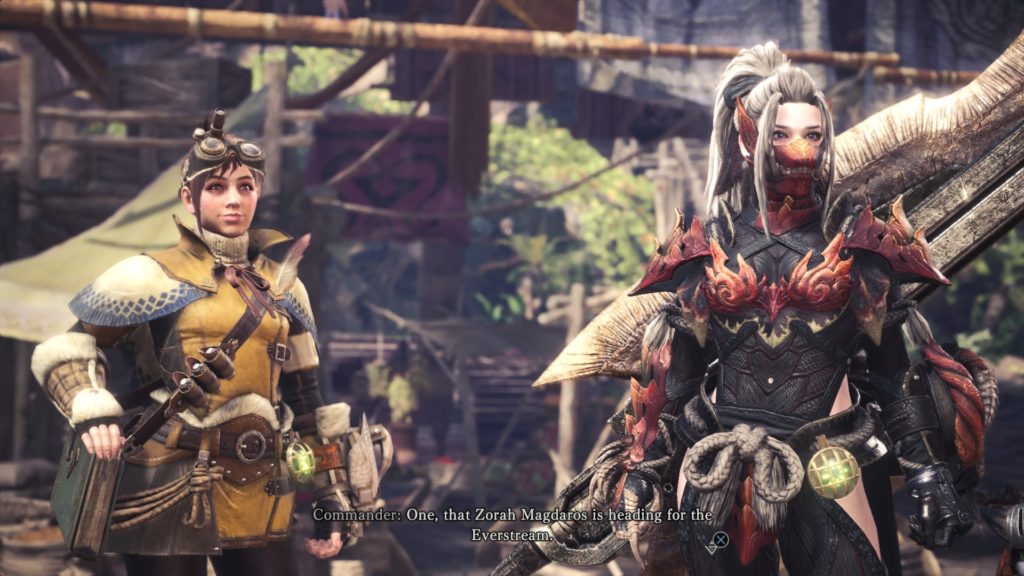
Capcom really did it
 (4.7 / 5)
(4.7 / 5)
I was never a fan of Monster Hunter. I’ve tried my hands some PSP games of the franchise, but it always felt like a somewhat pointless game to play. It required hundreds of hours to plow through and its progression felt like nothing but mindless farm. The combat was good, but the arenas were simple, the monsters had little to offer when compared to traditional action-game’s bosses, and the visual experience never left an impact on me.
Monster Hunter: World came to completely change that. It’s graphical quality is superb, the monsters feel powerful, the maps are multi-layered mazes where the environment always hide something useful for you, the weapons have real weight, rewards come in a steady pace, and the preparation steps exist to make things easier and not as required stuff to remember before each fight.
If you ever want a game that challenges you and is capable of offering you new experiences with every mission, well, you must simply pick Monster Hunter: World and play it with a few random hunters around the world.
Summary
-
Production
-
Replay Value/Content
-
Polish
-
Concept
-
Fun
